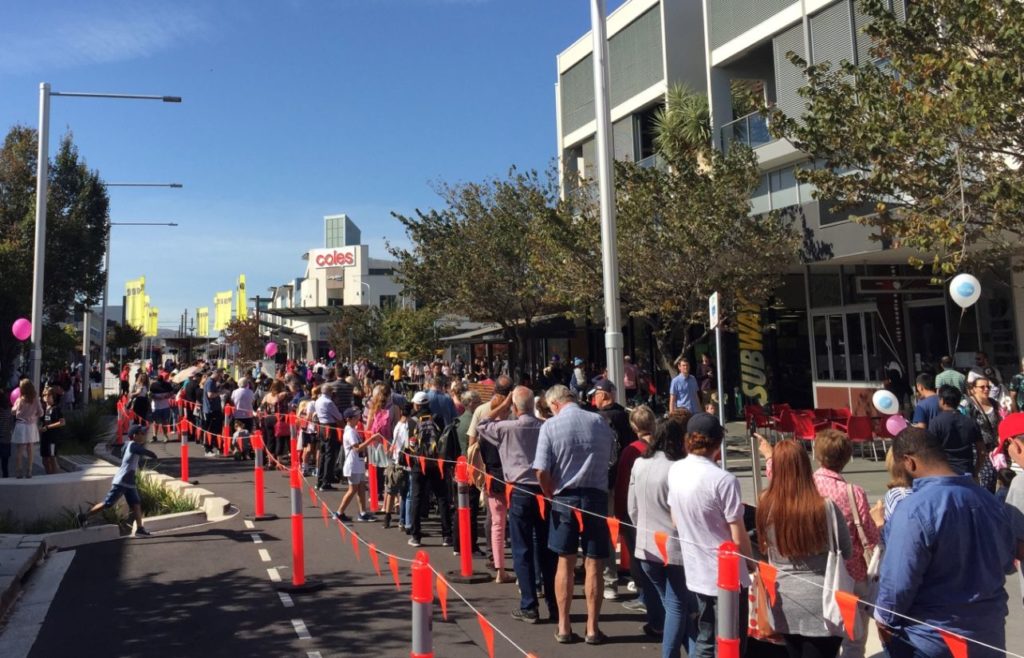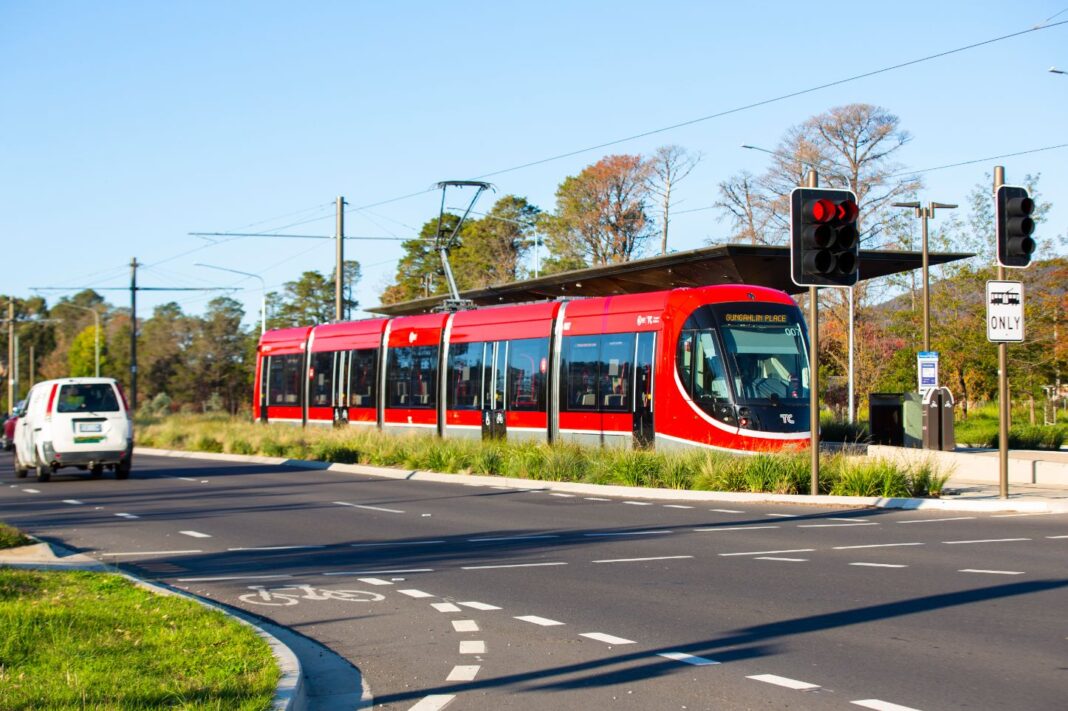With everything that’s happened subsequently, it’s hard to believe it’s been a whole calendar year since Light Rail Stage 1’s maiden voyage departed the city station on Easter Saturday 2019 to shoot up Northbourne toward Gungahlin.
A much-maligned project that divided opinion across the ACT, mainly by what side of the lake you live on, according to the Territory Government’s own metrics the project to date has been a resounding success.
Before the COVID-19 pandemic there were, on average, 15,047 passenger boardings each day, numbers that weren’t expected until 2021.
The busiest month in the first year of operations was May during the free travel period with over 460,000 customers travelling, followed by October 2019 with over 411,000 boardings across the 31 days.
The most frequented light rail stop was Alinga Street in the City with nearly 40% of light rail trips starting at that station.
The number of week day journeys across the Territory’s public transport system was down by 88.5% in the week ending 12 April 2020 compared with the same week in 2019 with patrons being told to refrain from public transport except where essential.
Public Transport Association of Canberra chair, Ryan Hemsley, supported Transport Canberra’s approach of retaining current public transport service levels during the crisis.
“As restrictions are lifted in the months ahead, we urge the ACT Government to consider increases to select services to ensure that social distancing can continue for as long as is required,” he said.
It appears users are happy with the service too.
According to the Government’s latest customer survey, 94% of customers were satisfied with the ease of use of the light rail and it now accounts for around 20% of all public transport boardings across the ACT.
In February, services had to be increased during peak times to manage the demand and crowding on light rail vehicles.
Mr Hemsley said the success of Stage 1 has proven there is an “untapped demand for high-quality public transport services in the ACT”.
“We believe that similar patronage increases can be expected as future stages of the network are rolled out in the years ahead, providing benefits to both current and future generations of Canberrans,” he said.

Where to now?
So, what do these times of unheralded economic circumstances mean for the future of the Barr Government’s signature infrastructure project?
Transport Minister Chris Steel told Canberra Daily that major infrastructure projects like the future stages of light rail will have an important role to play in Canberra’s economic recovery through the creation of new construction jobs.
“COVID-19 has created uncertainty in the construction sector and ACT Government is closely monitoring risks and actively considering ways to ensure the projects continue progressing, worker safety is maintained and commercial risks are appropriately managed,” he said.
“Site investigations have commenced on Light Rail Stage 2A (city to Commonwealth Park), with findings to be used to inform the project’s detailed design. Commonwealth and Territory works and planning approvals will be sought later in 2020 and construction work is still scheduled to occur in 2021.”
Mr Hemsley said social distancing measures also present an opportunity for both the ACT Government and National Capital Authority to conduct important works during a rare period of reduced traffic.
“Such as upgrades to London Circuit as part of Stage 2A and the modifications to Commonwealth Avenue Bridge that will future-proof it for Stage 2B,” he said.
“We call on both the ACT Government and National Capital Authority to work collaboratively, so that that these projects can be fast-tracked in a manner that provides the greatest long-term benefit, while minimising disruption to road users in the short term.”









